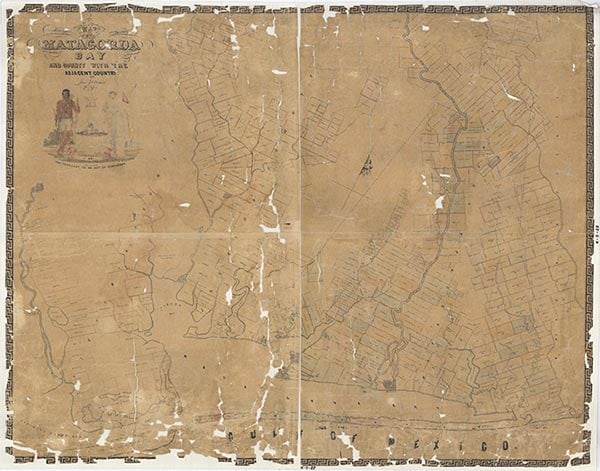Matagorda

Matagorda is near the Colorado River mouth and East Matagorda and Matagorda bays, on State Highway 60 and the Atchison, Topeka and Santa Fe line in southern Matagorda County. The community was established after Stephen F. Austin secured permission in 1827 from the Mexican government to build a town to protect incoming settlers. Elias R. Wightman, Hosea H. League, James E. B. Austin, and partners Thomas M. Duke and William Selkirk each took a one-quarter interest in the townsite. After laying out the town in 1827, Wightman gathered approximately fifty to sixty colonists, mostly from New York, for the community. On August 1, 1829, the proprietors met and elected town officers, as their constitution had provided. They also donated lots to some individuals in return for their special services. From the beginning, cotton was important; a gin was in operation in the area as early as 1825. Matagorda was incorporated in 1830, and by 1832 it had some 1,400 residents; there were an additional 250 people living outside the town but within its jurisdiction. Beginning in the 1830s, the town, then the closest port city to New Orleans, served as an entry point for immigrants arriving both overland and by sea. A Mexican customhouse was established in 1831, and a chamber of commerce was in operation by 1840. James H. Selkirk constructed one of the first dock-and-warehouse businesses in the town, and freight moved along the Colorado River despite a raft of logs and debris that impeded river passage. The raft was successfully removed in 1929, but until then water behind it was used for irrigation, and the threat of Colorado River flooding remained.
Representatives from Matagorda attended meetings and conventions leading up to the Texas Revolution. Men from Matagorda signed a pledge to protect Goliad, and were among those who signed the Goliad Declaration of Independence in 1835. Residents left the town deserted in the Runaway Scrape, but returned to form Matagorda County (1836) with Matagorda as county seat (1837). After the revolution, the town grew as a shipping point and became a center for a social life characterized by Southern culture. As early as 1837 the community published a newspaper, the Matagorda Bulletin. Theaters and hotels were operating by 1838, and around 1845 one observer noted that many owners of plantations on the Colorado River and Caney Creek, where the summers were unhealthful, had summer homes in Matagorda. Local schools were soon established, including Matagorda Academy (which had opened by 1839), Lafayette Academy, and a Young Ladies School. After the 1854 Education Act set aside state land for schools, the county was divided into six school districts, with the first public schools opening at Matagorda.
Diana J. Kleiner | © TSHA

Adapted from the official Handbook of Texas, a state encyclopedia developed by Texas State Historical Association (TSHA). It is an authoritative source of trusted historical records.
Belongs to
Matagorda is part of or belongs to the following places:
Currently Exists
Yes
Place type
Matagorda is classified as a Town
Location
Latitude: 28.69082220Longitude: -95.96746250
Has Post Office
Yes
Is Incorporated
No
Population Count, 2021 View more »
431

